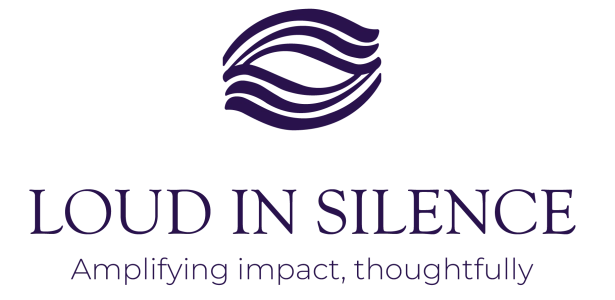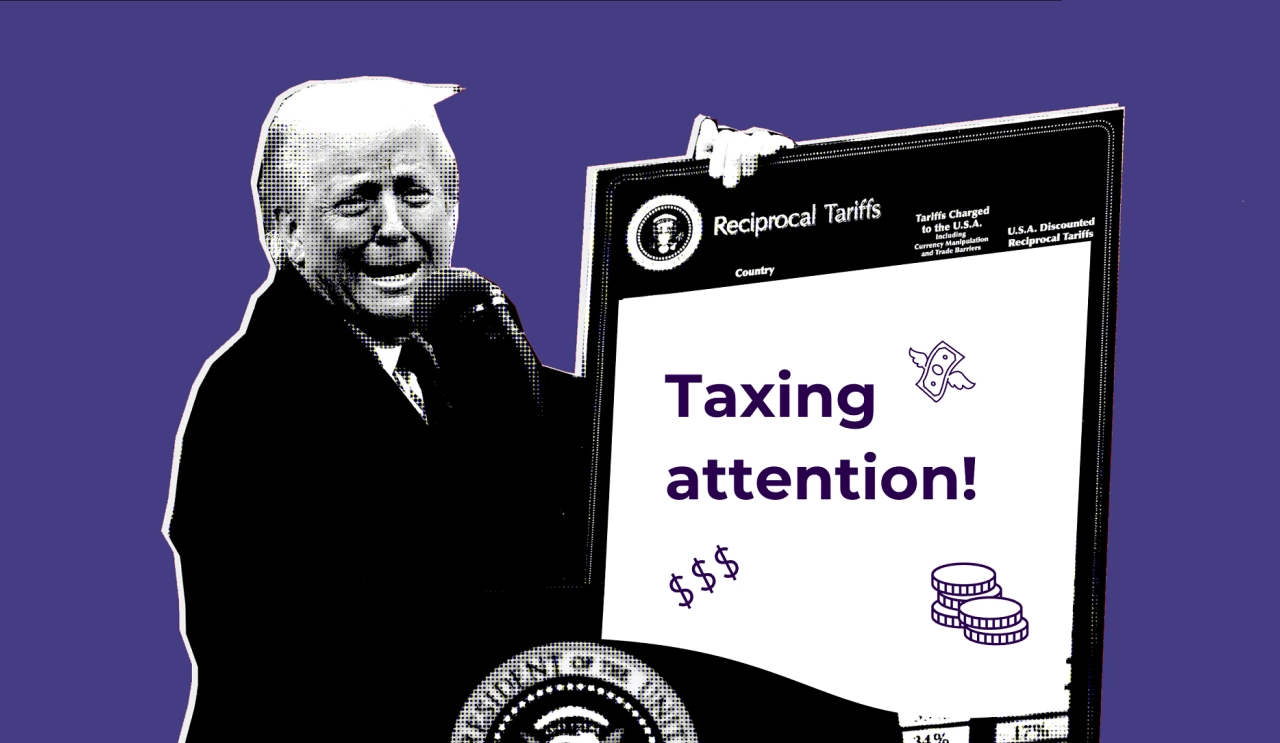Attention Is Not Free
“Your audience is not ignoring you because they don’t care.
They’re ignoring you because you’re not worth the tax.”
In today’s digital landscape, attention is no longer a gift - it’s a trade. And like any trade, it comes with cost. Not in money, but in time, energy, and focus - three resources more limited than most marketing budgets.
What we’re facing isn’t just noise fatigue. It’s a new kind of economy.
Where attention is taxed.
Where every message you put out is silently audited by your audience, asking:
“Was this worth the seconds of my life I’ll never get back?”
If you need a vivid example of how attention can dominate the global stage, look no further than Donald Trump. Throughout his presidency, every tweet - yes, even those at 2 a.m. - had the power to make the world hold its breath.
Love him or loathe him, people has to pay attention.
Willingly or not.
That, in essence, was Attention Tax - presidential edition.
The term “Attention Tax” isn’t a buzzword in Marketing & Branding - it’s a real consequence of how overloaded, overstimulated, and over-pitched our audiences have become. And unlike financial tax, this one doesn’t go to any government. It’s paid in scrolls, skips, unfollows, and indifference.
So, if you’re pouring budget into clicks and reach without asking what value you’re offering in return - you might already be in attention debt.
The Global Economy of Attention
We’re used to thinking about economies in terms of goods, money, and now, data. But there's another layer of trade happening every second - one that doesn't show up on your balance sheet: the economy of attention.
Much like countries impose tariffs to protect their domestic industries, consumers today have quietly established their own "import taxes" on the content they allow into their lives. Every scroll on social media, every skipped YouTube ad, every unopened email - is a sign: attention has become expensive.
Thales S. Teixeira of Harvard Business School said it best, "The market for consumer attention (or 'eyeballs') has become so competitive that attention can be regarded as a currency.”
And consumers spend it carefully.
Each piece of content is a transaction. One side offers a message. The other side pays with their time. But here's the catch: if the perceived value is low, your brand doesn’t just lose that moment - you risk losing the right to be seen again.
This is what many brands miss.
They chase impressions, not permission.
Reach, not resonance.
But the market has changed. In the attention economy, every view is borrowed - until you prove you're worth it.

Image: Otto Steininger/Ikon Images/Getty Images
Rethinking the Attention Tax Paradigm
Let’s be clear: attention isn’t given, it’s earned. And in today’s saturated digital space, that comes at a cost - what we call the Attention Tax.
What is Attention Tax, really?
It’s the invisible fee consumers charge for letting your content into their minds.
They may not say it out loud, but the terms are clear:
“If you want my attention, it better be worth something.”
This “tax” is measured not in money, but in mental effort. If your content demands too much and gives too little, the cost feels high - and people opt out. They swipe past your video, close your tab, or mentally mute your brand.
Like any unpaid debt, attention debt accumulates. Over time, it becomes harder and harder for your brand to re-enter the conversation.
Why Attention has become so expensive
Because we’ve flooded the market.
AI-generated content is everywhere. Algorithms push more, faster. The average person sees up to thousands of brand messages a day. That’s not a battlefield. It’s a noise storm.
And our brains weren’t built for that.
As a result, consumers have developed natural defense mechanisms - scroll fatigue, ad blindness, and content avoidance. And every time you interrupt them without offering true value, the tax goes up.
So no matter how much budget you pour into reach, if your message feels irrelevant, confusing, or low-effort, you’re simply overpaying for nothing in return.
Let’s take a look at the Facebook ads cost through the years to see the result. Who remembers the time when you ran a 1đ campaign in 2010 - 2013?

The case of Quibi: When Budget can’t buy enough attention
Let’s talk about Quibi, one of the biggest cautionary tales in recent marketing history.
Launched in April 2020, Quibi had it all:
Over $1.75 billion in funding
Hollywood star power
A massive Super Bowl ad campaign
A bold promise to revolutionize mobile video
But just six months later, the platform shut down.
What happened?
Quibi spent big to grab attention but forgot to earn it.
It assumed people would tune in just because the content was short and high-budget.
But in reality, users didn’t see the value. The content wasn’t optimized for how people actually watch on mobile. There was no emotional hook, no clear "why." The result? Sky-high spending, near-zero engagement.
Quibi didn’t fail because people didn’t see it.
It failed because people didn’t care about what was not valuable to them.
📌 Lesson learned: Attention isn’t about visibility - it’s about relevance.
And in this economy, if you don’t deliver value quickly and clearly, your audience won’t just ignore you.
They’ll remember not to come back.
Strategic approaches to managing Attention Liability
Recognizing attention as a form of “tax” is only the beginning. To make that tax worth paying, brands must move beyond catchy hooks to create content that truly earns attention - efficiently and respectfully.
Optimizing content calue propositions
Every piece of content is a value exchange. And whether they say it or not, every consumer is asking: “Is this worth my time?”
The answer must be yes - not because the content is loud or long, but because it's focused, purposeful, and valuable.
If it’s a video: trim the fluff. Users drop off fast if value isn’t front-loaded.
If it’s an article: make every paragraph count. Skip the filler.
If it’s an ad: say something that matters. Not just what’s easy.
In the attention economy, you don’t ask for attention - you earn it.
Earning attention through relevance
Clickbait headlines and shock tactics may momentarily grab attention - but they often backfire, leading to disengagement, distrust, or simply being ignored.
On the other hand, content that feels personally relevant requires less “cognitive cost” to engage with - because it already aligns with the audience’s needs, emotions, or worldview.
So the key question isn’t:
“How do we stand out more?” but rather:
“How do we make people feel like this was made for them?”
When relevance is real, attention flows naturally. No force needed.

Case Study: Spotify Wrapped
Every December, without a massive campaign or media spend, Spotify Wrapped becomes a viral phenomenon.
Why?
Because it hits all the right notes of attention-worthy content:
Relevance: It’s about you, not Spotify.
Emotion: It evokes nostalgia, identity, and pride.
Ease: It’s quick to consume, easy to share, and visually delightful.
No discounts. No gimmicks. Just one truth: people pay attention when they feel seen.
Spotify isn’t forcing engagement. They’re earning it year-round through data, then rewarding it with resonance.
Takeaway: The quatet of Attention Efficiency
If attention is a tax, these four tools - CVNQ - are your best ways to pay it wisely:
Information Condensation – Say more with less. Pack value into clarity.
Visual Intelligence – Use images not just to decorate but to communicate.
Narrative Structure – Storytelling is the shortcut to the brain. Wrap your message in a structure people naturally follow.
Question yourself – Don’t forget to re-ask yourself before publishing content:
Is this relevant to my life?
Does this make me feel something?
Is this worth my time?
When done right, content doesn’t just get noticed - it gets remembered.
The Economics of Attention Management
In marketing, attention isn’t free. It’s a resource you spend—and if spent carelessly, it burns through budget, trust, and opportunity.
Wasteful Spending in the Attention Marketplace
Case Study: The Pepsi Refresh Project (2010–2011)
In 2010, Pepsi made headlines by pulling its ads from the Super Bowl for the first time in 23 years. Instead, it invested $20 million into a bold new campaign: The Pepsi Refresh Project. The idea was noble - funding community initiatives through online voting. It aimed to position Pepsi as a purpose-driven brand.
What went wrong?
Misdirected attention: The campaign drew massive engagement - but very little of it focused on the product or brand story.
Poor brand connection: Consumers connected with the causes, not Pepsi. When the brand faded into the background, it lost relevance.
Short-term visibility, long-term loss: While the campaign generated buzz, it failed to translate into sales. In fact, Pepsi dropped from second to third place in the U.S. cola market, ceding ground to Diet Coke. Their net income dipped 5% in the third quarter of 2012 (according to NYTimes) and they were struggling for 7 years before surpassing 2011’s total revenue (data from Macrotrends).

The Refresh Project is a cautionary tale: even massive attention isn’t useful if it’s not aligned with core brand value. Without a clear link between what you say and what you sell, attention turns into noise.
Building Attention Credit Through Trust
In contrast, some brands treat attention as a privilege - not a right. And they build trust by consistently delivering value before making demands.
Think of it like a “attention credit system”:
Every useful newsletter.
Every insightful blog.
Every honest customer reply.
All of these actions build attention credit - making people more likely to tune in next time, not less.
Trust reduces the “attention tax” over time. Once a consumer sees your brand as generous, reliable, or insightful, the mental barrier to engaging with you again shrinks. The message feels more like a conversation with a trusted resource than an interruption.
So how do brands actually build attention credit?
It depends - on your resources, your goals, and your consistency. But there are a few timeless paths that brands can walk, either one at a time or all together:
Consistent content marketing: Brands that show up regularly with genuinely useful information earn trust over time. The more value you give without demanding attention, the more willing people are to give it when you ask.
Transparency: Be upfront. When you clearly state why your content exists, how long it will take, and what someone can expect to gain, you're not just earning attention - you're respecting it. And that builds equity, not fatigue.
- Community-first thinking: Some of the most effective ecosystems are the ones where brands step back and let peer-to-peer value take the lead. A well-nurtured community reduces the cognitive cost of engagement - because people don’t just listen to the brand, they talk to each other.

Take Metric for example. Instead of selling, we decided to share - publishing in-depth eCommerce reports every quarter, by industry, by trend. The content is free, but it’s anything but shallow: high-signal, insight-rich, and crafted with care. Of course, mistakes have happened - flawed data, algorithmic shifts, even bot-driven anomalies (buff orders). But when that happened, they didn’t hide. They explained. Corrected. Apologized. And that quiet honesty, over time, became a foundation of trust.
Today, those reports aren’t just a piece of content - they’re a go-to source. In 2024 alone, they were cited in over 2.5 articles per day across Vietnam’s top media outlets. Any PR professional would call that a win. But it wasn’t won through hype. It was earned - slowly, honestly, and deliberately.
Because in the long run, brands that respect attention don’t just borrow it.
They keep it.
The Ethical Imperative of Attention Stewardship
Whenever someone gives you their attention, they're giving up something else they could be doing, seeing, or feeling.
That’s not just a cost - it’s a responsibility.
When brands interrupt, distract, or manipulate attention without offering value, they’re not just wasting a marketing budget. They’re eroding the attention economy itself—making it harder for everyone, including themselves, to earn trust in the future.
So here’s the shift:
❌ “How can we get people to look at us?”
✅ “How can we be worthy of being looked at?”
In the age of scrolls, skips, and swipes, attention is no longer cheap. But for brands that respect it - who give more than they take - attention is still the most powerful currency there is.
P/S: Deeply grateful to find out the work of Thales S. Teixeira of Harvard Business School. Enjoy reading full research here.





